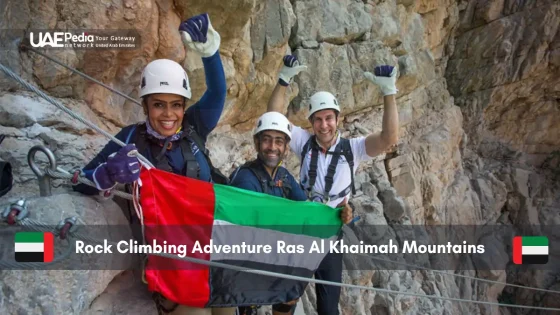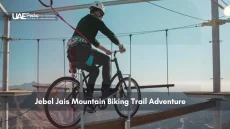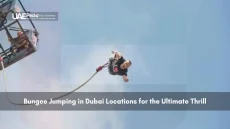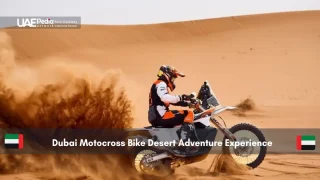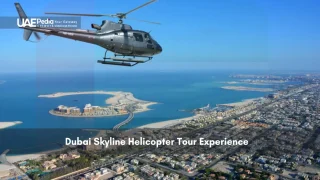What if we told you the UAE holds terrain rivaling Yosemite’s granite walls? Ras Al Khaimah’s jagged peaks defy desert stereotypes, offering vertical challenges where ancient seabeds meet modern ambition. This northern emirate reshapes what climbing in the Arabian Peninsula means—and we’ve traced every handhold to prove it.
Here, limestone ridges glow amber at dawn, while routes once tackled by Bedouin hunters now test global adventurers. You’ll find freshly bolted sport climbs beside 1,000-year-old trade paths, all framed by wadis that whisper tales of resilience. It’s not just about scaling heights—it’s decoding a landscape where geology and heritage collide.
Our team (locals and expats alike) spent months mapping these ascents. We’ll share insider tips, from sunrise summit rituals to post-climb karak chai stops. Whether you’re a trad purist or gym-trained rookie, Ras Khaimah’s crags welcome all—no filler, no fluff, just pure vertical stoke.
Quick takeaways:
- Discover why this emirate’s mix of Bedouin history and modern routes makes it a climbing anomaly
- Learn how Ras Al Khaimah’s geology creates unique challenges for every skill level
- Grab practical insights from climbers who’ve pioneered these ascents since 2018
Planning Your rock climbing adventure ras al khaimah
Smart prep turns desert dreams into reality here. Unlike crowded global hubs, Ras Khaimah’s crags demand more than chalk bags and grit—they require cultural savvy and tech-smart strategies. We’ve cracked the code for balancing beta with respect.
Digital Maps Meet Mountain Wisdom
Local pioneers like Total Climbs catalog 200+ routes with GPS pins and Bedouin trail notes. Their app overlays modern sport lines atop ancient goat paths. Pro tip: Pair digital tools with guidebooks from AdventureHQ—their shaded wall diagrams save phones from midday meltdowns.
When Sandstorms Meet Sunset Sends
October-March delivers crisp 75°F days perfect for sending projects. Summer? Even lizards seek shade. Check UAE’s NCMS forecasts religiously—those harmless clouds often morph into wadi-flooding downpours. Arrive at crags by 6 AM November-February; you’ll nab prime parking and avoid afternoon shamal winds.
Logistics matter:
- Book guides through RAK Tourism Authority (certified locals know hidden anchors)
- Pin meeting spots like Wadi Shawka’s blue pickup truck landmark
- Respect Friday prayer times when planning transfers
One route developer told us: “Pack humility with your harness—these mountains school everyone.” Wise words. Now go plot those sends.
Discovering the Best Climbing Routes in Ras Al Khaimah
Imagine limestone walls where Bedouin herders once scrambled—now reimagined with stainless steel bolts. The Hajar Mountain Range hides routes that blend ancient footpaths with modern-grade chasing. Whether you’re drawn to trad’s puzzle-solving or sport’s adrenaline rush, this landscape delivers both.
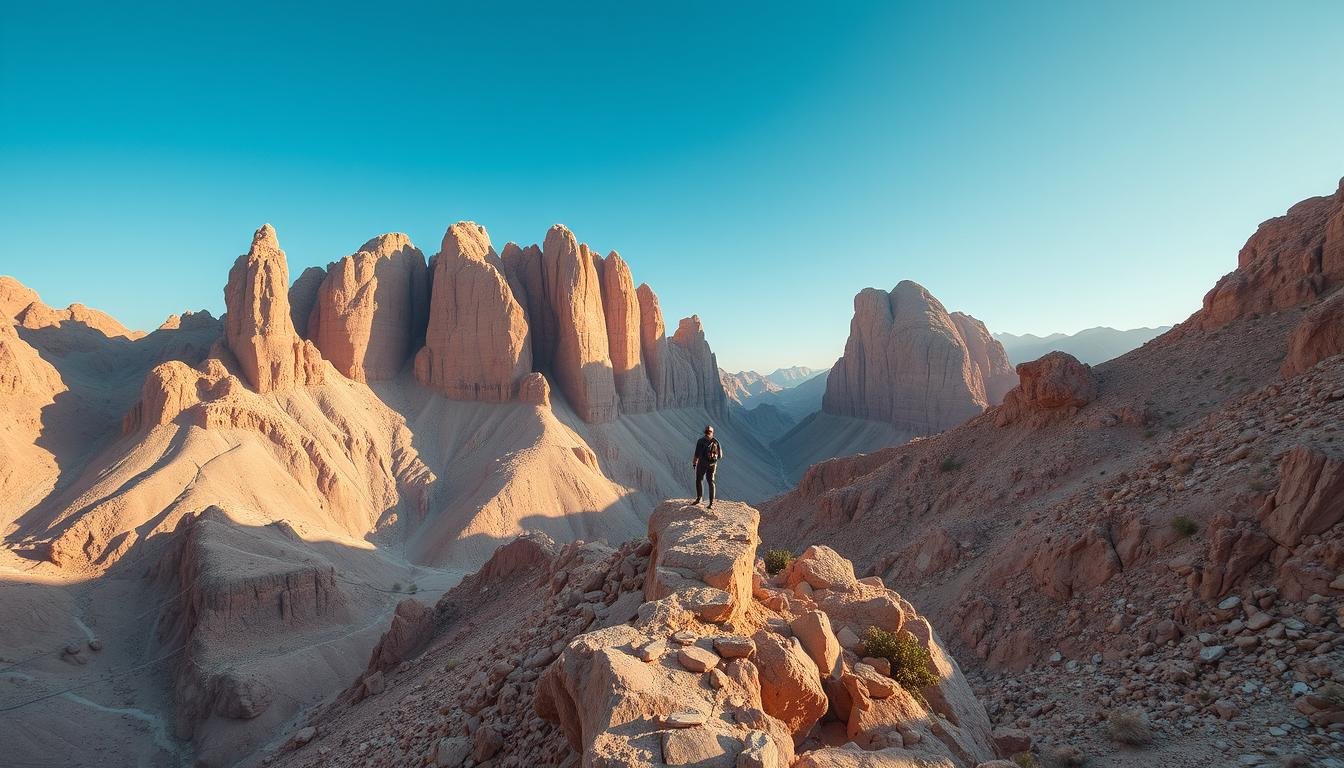
Top Trad and Sport Climbing Areas
Stardust Crag near Wadi Ghalilah shines for sport enthusiasts. Its 35-meter vertical face offers butter-smooth crimps and exposed aretes—check out the Stardust Crag route guide for beta. Trad purists flock to Jebel Jais’ western buttress, where 2018 pioneers like Mark Synnott placed the first cams. “Every crack here tells two stories,” says route developer Lise Billon. “The mountain’s geological past, and the climbers who’ve nudged its future.”
Hidden Gems in the Hajar Mountain Range
Veterans whisper about Shawka’s “Sandstone Secret”—a 20-meter trad line requiring nut placements as precise as falconry. Newcomers love Hatta’s boulder fields, where sunset hues make even V2s feel epic. Local guides recently mapped three multi-pitch routes near Jebel Mleiha, perfect for dawn starts before desert heat kicks in.
Pro tip: Pack a mix of quickdraws and wired nuts. These mountains reward versatility—and the occasional post-send date shake at a nearby souq. Ready to leave your chalk marks on history?
Essential Climbing Gear and Equipment for Mountain Adventures
The right gear transforms UAE’s peaks from daunting to doable. Whether tackling multi-pitch trad lines or pocketed sport walls, your kit becomes your lifeline—and trust us, desert walls don’t forgive shortcuts. Let’s break down what earns a permanent spot in your pack.
Tailored Tools for Every Discipline
Trad enthusiasts need cams and nuts that bite into limestone cracks—Black Diamond’s C4s and DMM Walnuts are local favorites. Sport climbers? Prioritize 12+ quickdraws and a 60-meter rope (Petzl’s Volta works magic on overhung routes). Bouldering demands thick crash pads; Organic’s Big Pad survives sharp Hajar landings.
Pro tip: Hit Dubai’s Go Sports or Abu Dhabi’s Decathlon for last-minute essentials. Picnico’s Sharjah branch stocks niche items like finger tape and desert-proof chalk bags. One manager told us: “Double-check rope lengths—some routes here eat 50m lines for breakfast.”
- Water reservoirs with bite valves (3L minimum)
- Compact first-aid kits with blister pads
- Date-based energy bars from local brands
Smart gear choices do more than prevent mishaps—they let you focus on the moves, not the mountain. Now lace those shoes tight. The crags await.
Safety Guidelines and Local Climbing Practices
Ever tried tap-dancing on a frying pan? That’s how your shoes feel on summer limestone here. These peaks demand more than muscle—they require wisdom passed down from guides who’ve weathered sandstorms and sent projects at golden hour. Let’s decode desert safety without sucking the stoke.
Managing Heat, Loose Rock, and Safety Precautions
Local sport route developer Amna Al Hammadi puts it bluntly: “Your water bottle is your first quickdraw.” Follow her 3:1 rule—three sips every 15 minutes, even if you’re not thirsty. We stash electrolyte tablets in our chalk bags and seek north-facing walls after 10 AM.
Loose rock? Test every hold like it’s rigged with a silent alarm. Veteran climbers double-check anchors and avoid yanking flakes. One pro tip: Use a helmet-mounted GoPro to spot micro-fractures your eyes miss.
- Inspect lower-off chains for rust—sand abrasion weakens metal faster here
- Belayers: Wear gloves to prevent rope burns during dynamic catches
- Pack a satellite messenger; cell service vanishes in slot canyons
Respect matters as much as ropes here. Greet Bedouin shepherds with “As-salamu alaykum” before crossing grazing lands. Avoid bolting near archaeological sites—this landscape holds stories older than carabiners.
“Check the forecast twice, pack your headlamp thrice. Desert weather shifts faster than a cam in a flaring crack.”
| Essential Contingency Items | Why It Matters | Pro Upgrade |
|---|---|---|
| 3L hydration bladder | Prevents heat exhaustion | Insulated hose sleeve |
| Compact trauma kit | Treats rockfall injuries | QuikClot gauze |
| GPS watch | Marks wadi exits | Preloaded rescue coordinates |
Local Culture, Access, and Environmental Considerations
Respect is your best gear when exploring these ancient terrains. The same wadis that challenge your route-finding skills also serve as vital water sources for local communities. Greet shepherds with a warm “As-salamu alaykum” if you cross grazing lands—it’s more than courtesy, it’s connection.
Road conditions here change faster than a desert mirage. What’s paved today might be rubble tomorrow after seasonal rains. Always:
- Use a 4WD vehicle—sand traps don’t care about your Instagram timeline
- Download offline maps from specialty websites like Adventure Safety Hub
- Check recent forum posts about washouts before heading out
Parking etiquette matters. Avoid blocking animal trails or narrow wadi entrances. One climber learned the hard way: “My rental got towed because I ignored the ‘no overnight’ sign near Jebel Haqil—lesson earned, not given.”
Environmental stewardship keeps these landscapes climbable. Follow the pack-in, pack-out rule religiously. Camp only in designated areas, and use portable toilets—the desert’s fragile ecosystem thrives on your mindfulness.
Local websites like UAE Holiday Safety offer course recommendations based on skill level. Their updated trail reports help you navigate the mountain range responsibly. Remember: Every choice here writes the next chapter of this land’s story.
Expert Tips from Climbing Pioneers and Veteran Climbers
You’ll find more than finger tape and carabiners in these mountains—stories cling to the limestone. Pioneers like John Gregory spent countless hours scouting lines where others saw only cliffs. “Our first base camp was a pickup truck bed,” laughs Alan Stark, who helped establish Wadi Shawka’s earliest sport routes in 2012. These trailblazers turned the Hajar range into a home for vertical problem-solvers.
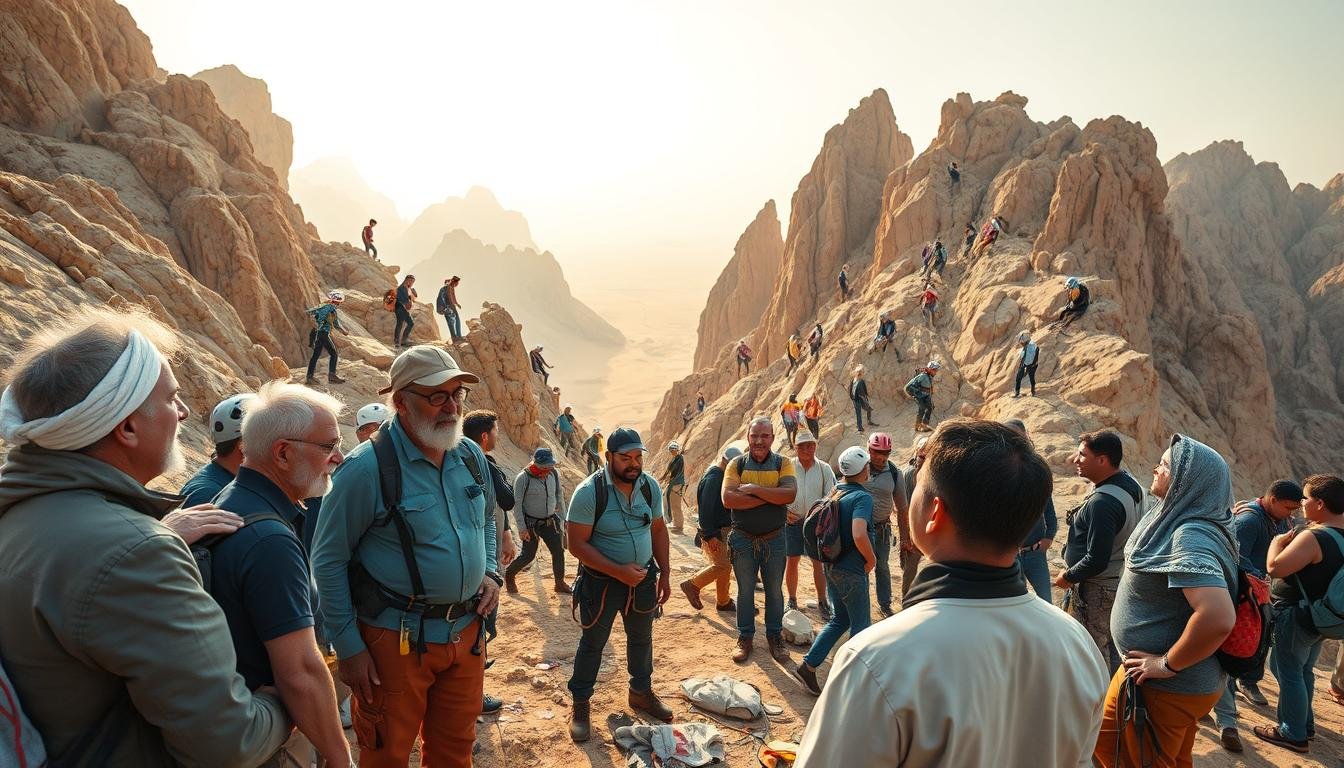
From Bedouin Trails to Bolt Ladders
Toby Foord-Kelcey recalls rappelling into unknown walls with handmade gear: “We’d test holds by throwing rocks at them—not OSHA-approved, but effective!” Their efforts birthed classics like Jebel Jais’ Golden Vein, where ancient trade routes now host modern climbers. Veterans emphasize three things: study morning shade patterns, pack extra slings for sharp edges, and always share beta with newcomers.
| Pioneer Contribution | Impact | Year |
|---|---|---|
| First sport route bolted | Opened Wadi Ghalilah | 2010 |
| Bolt Fund established | 300+ safe anchors installed | 2018 |
| Multi-pitch mapping | Created 12 new big-wall climbs | 2022 |
Building Legacies Through Carabiners
The community-driven Bolt Fund fuels progress—every AED 50 donation places a stainless steel anchor. “It’s not just hardware,” explains route developer Amna Khalid. “Each bolt honors someone’s courage to explore.” Visitors can contribute through local gear shops or by joining seasonal clean-up crews.
“These walls taught me patience. You don’t conquer them—you collaborate.”
Your sends become part of this living history. Snap photos of worn pitons for the UAE Climbing Archive, or swap stories at the crag. Every grip and grin stitches new threads into the region’s vertical tapestry.
Wrapping Up Your Mountain Experience
Every chalk mark here writes a new chapter in an ancient story. From mapping routes with Bedouin wisdom to packing trauma kits for sharp limestone, you’ve now got the tools to tackle these peaks responsibly. Remember—smart prep beats raw strength when desert sun tests your resolve.
The Hajar Mountain Range keeps evolving. Local developers add sport lines monthly, while trad purists uncover cracks untouched for centuries. Bookmark trusted websites like uaepedia.net for fresh beta, and swap stories with guides at trailhead meetups. Your word-of-mouth tips become someone else’s lifeline.
Whether you’re chasing golden-hour views or multi-pitch challenges, respect remains key. Greet shepherds warmly, tread lightly on fragile ecosystems, and double-check those anchors. This guide stays updated—bookmark it, share it, revisit it when new horizons call.
Grab your gear. The mountains won’t climb themselves. Just remember: here, every ascent matters—for your logbook, the community, and the land itself.
Aim for October to April—cooler temps (60°F–85°F) make those limestone walls way friendlier. Summer? Brutal. Even locals duck for shade by 10 AM. Check UAE’s National Center of Meteorology app for real-time updates.
Absolutely! Groups like Adventurati Outdoor offer half-day intro courses. You’ll learn knots, belaying, and route-reading basics on beginner-friendly slabs. Bonus: Guides share folklore about the peaks while you catch your breath.
A>Pack a ventilated helmet, comfy harness, and snug shoes (we love La Sportiva Tarantulas). Trad climbers: Bring cams up to #3—limestone cracks love ‘em. Pro tip: Tape gloves save palms on sharp holds.
A>Cover shoulders/knees when passing villages—no crop tops near mosques. If a herder waves, wave back! Avoid climbing near archaeological sites (yes, there’s 4,000-year-old petroglyphs up there).
A>Wadi Ghalilah’s “Secret Garden” sector has 5.10s with epic vistas. Insider move: Grab a RAK Mountain Development Agency map—they mark hidden springs perfect for post-climb dips.
A>Start at dawn, chase shade like it’s Wi-Fi. Hydration vests > water bottles—hands-free sipping! Electrolyte tabs are lifesavers. Pro climber Amna AlHaddad swears by neck gaiters soaked in ice water.
A>Thanks to the UAE Bolt Fund, major routes get yearly checks. Still, test each one. Local ethic: If you spot rust, report it via the Climb UAE WhatsApp group—they’ll fix it fast.
A>Stick to marked trails to protect fragile desert flora. Pack out tape, wrappers, even orange peels—they take years to decompose here. Better yet: Join a Adopt a Crag cleanup—earn karma points and new pals.
